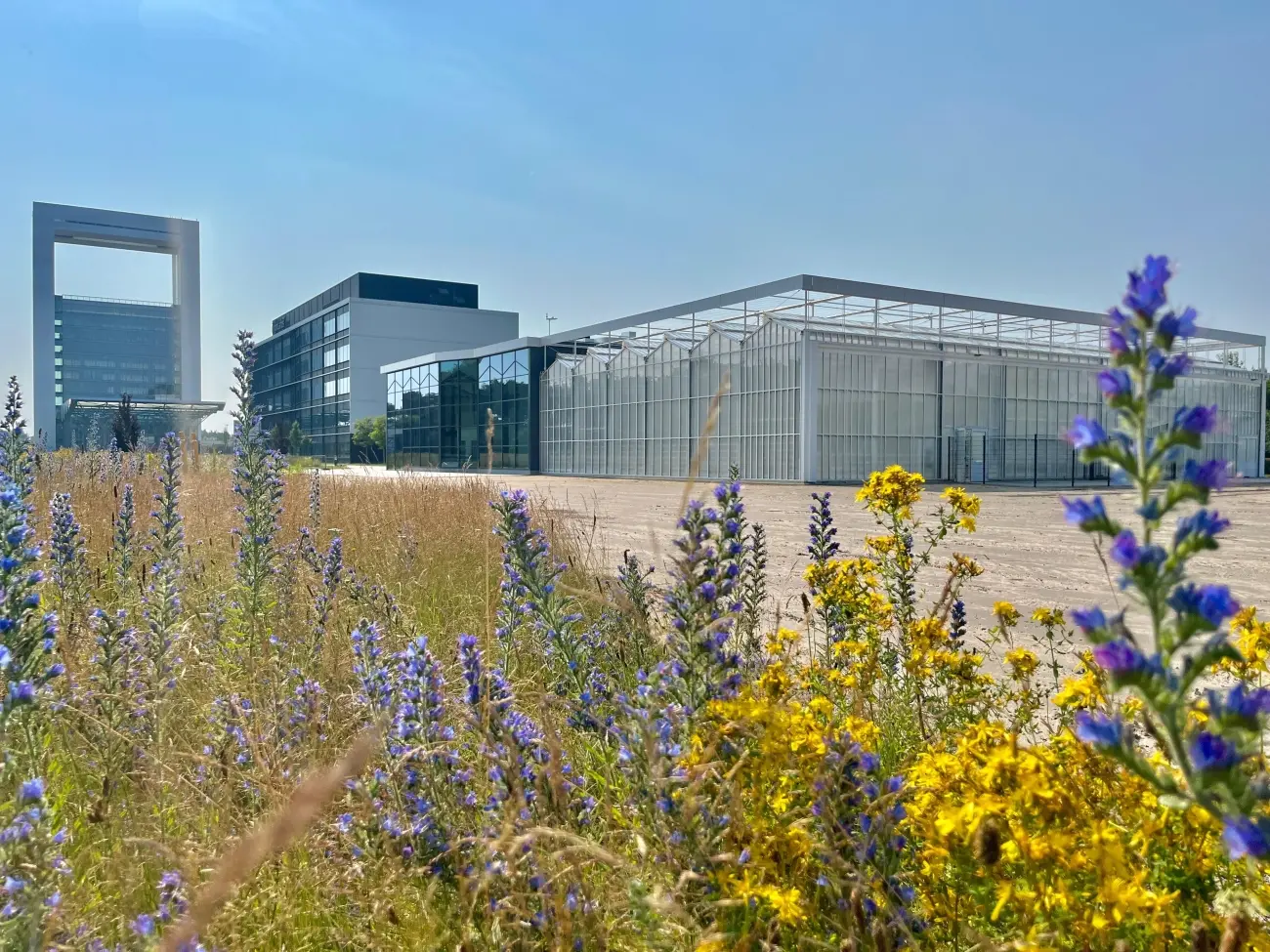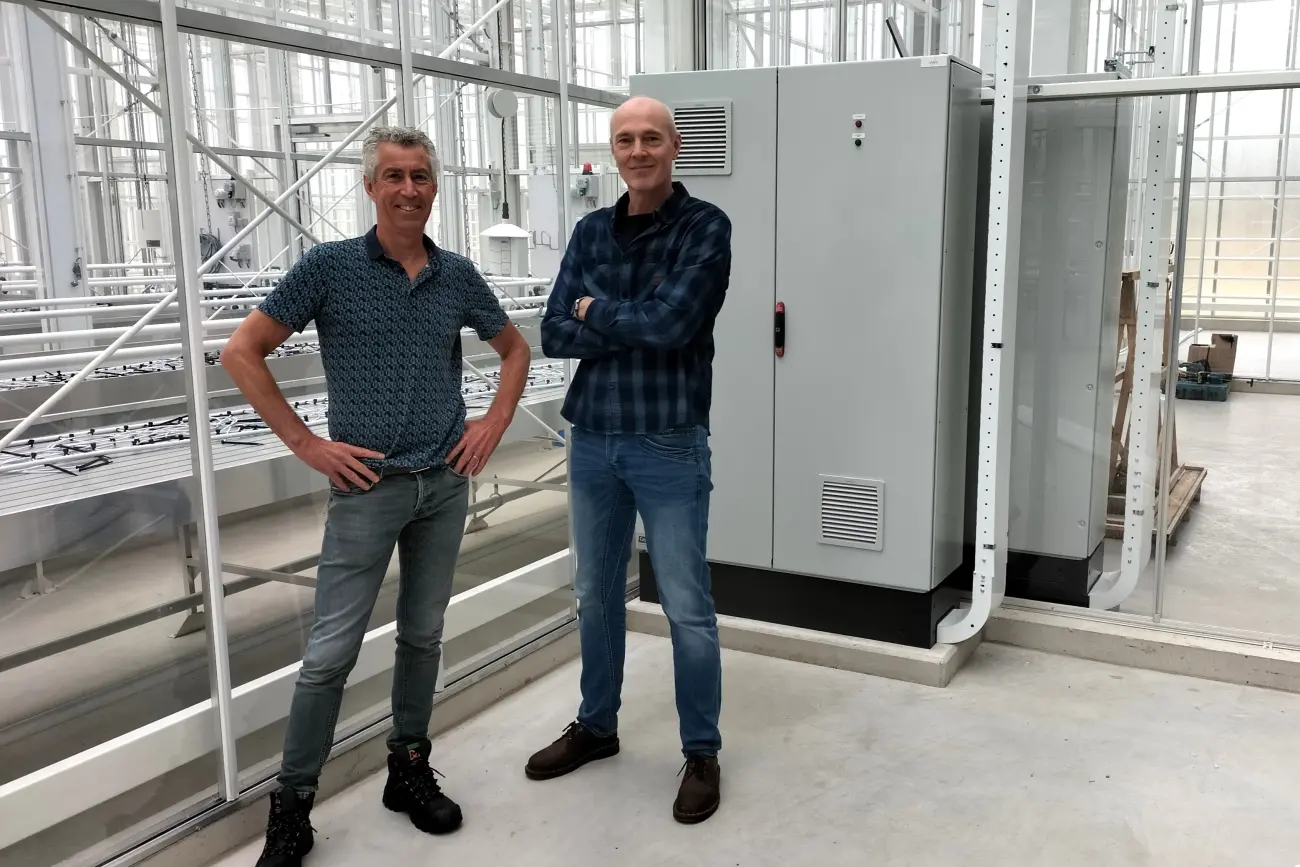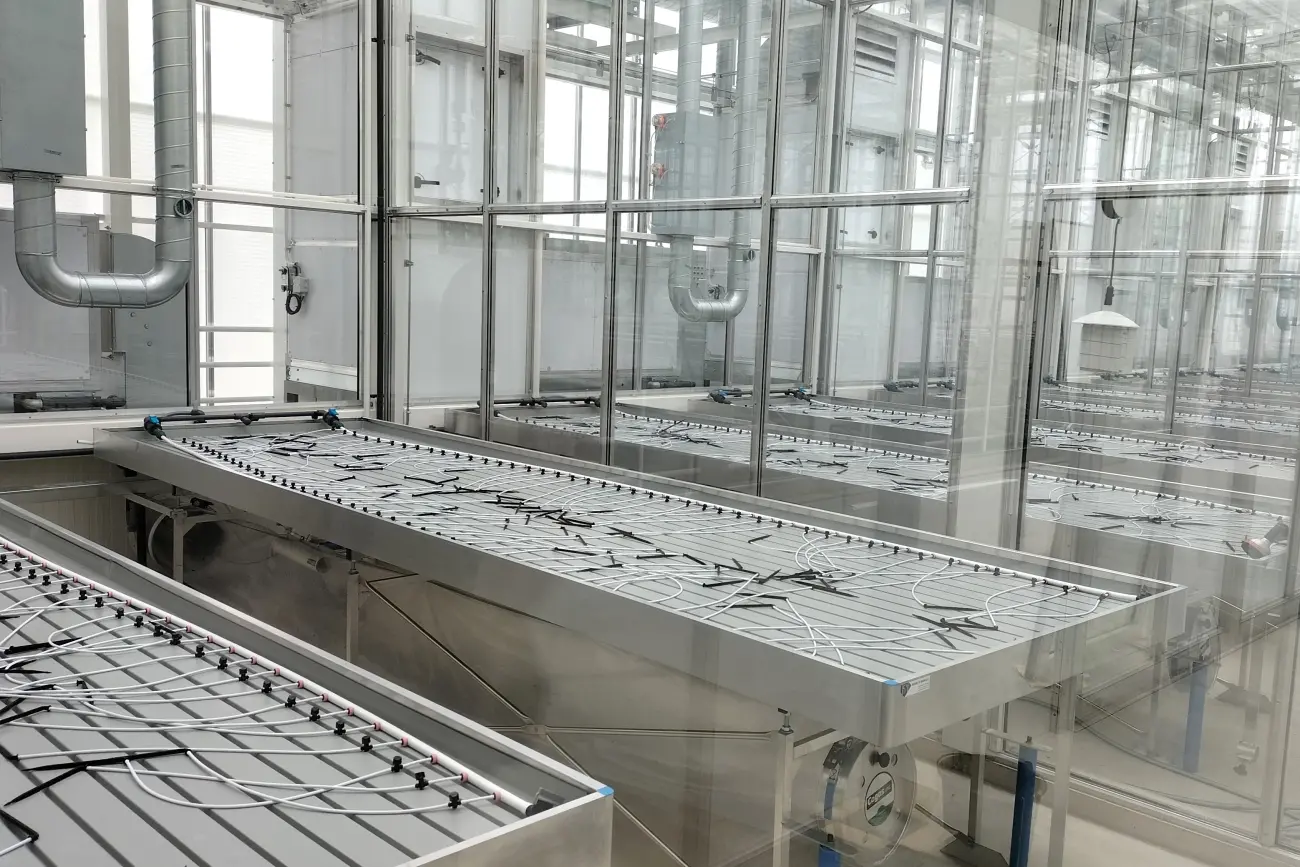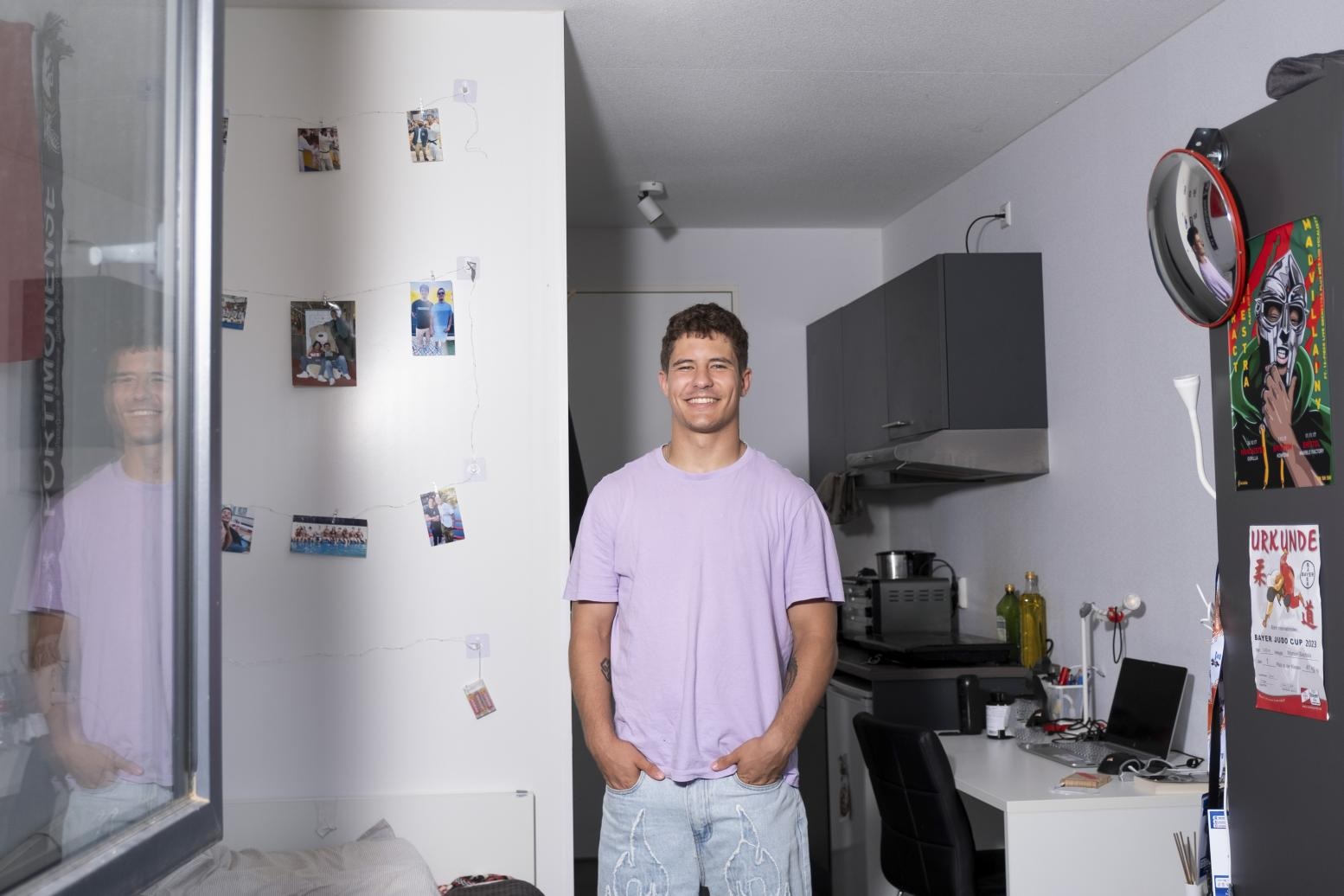High-tech greenhouse for scientific research and development
Maastricht University has built a new research greenhouse at Brightlands Campus Greenport Venlo. Starting on September 1, research will be conducted in this high-tech greenhouse on the agriculture and horticulture of the future: from new cultivation techniques and the development of plants to the optimization of healthy nutrients in crops.
The new research greenhouse is part of the Brightlands Future Farming Institute, a Maastricht University knowledge institute. This institute’s objective is to contribute to the technological and societal challenges in the agrifood sector through research, innovation and knowledge development.
According to Prof. Dr. Wim Vriezen, Professor of Plant Functional Genomics and affiliated with the Brightlands Future Farming Institute, one of the major challenges we face today is finding solutions that will enable us to feed the world’s population in 2050 in a healthy, safe and sustainable way. “North Limburg has traditionally been a large and important region when it comes to food production and crop improvement. This is what makes it the ideal place to work on the necessary innovations in agriculture and horticulture. The development of new infrastructure such as this new research greenhouse is crucial to achieving this goal.”
Customized climate
High-quality greenhouse sections and climate chambers will be built in the 1,600 m2 structure to facilitate research using the latest climate, irrigation and energy technologies. As technical manager at the Brightlands Future Farming Institute, Peter Keunen is actively involved in the development of the new greenhouse. “With a typical greenhouse, you build one large, open space, but the areas in this greenhouse are small and have to be sealed optimally to keep insects or pathogens out or moving from one space to another. Additionally, it has to be possible to create a different climate in each compartment of the greenhouse and you want to be able to facilitate as many crops as possible: for upright crops such as tomatoes you need growing gutters, but other crops such as leaf vegetables do best on growing tables.”
Text continues below the photo.

Visit the high-tech research greenhouse?
The AgriTech Event will be held at Brightlands Campus Greenport Venlo on Thursday, October 8. Participants in this event can take a behind-the-scenes look at this brand new high-tech research greenhouse of the Brightlands Future Farming Institute.
Read more about the AgriTech event

Fully gas-free
The greenhouse is completely gas-free and runs on heat pumps. This translates to the supply of low-grade heat, but the use of double glazing and a larger heating surface make it possible to achieve sufficient temperature in the greenhouse, according to Peter. In addition to the ten regular climate-controlled greenhouse sections, six greenhouse areas will be created where the light and temperature can be fully controlled by LEDs via air handling units (AHUs). During the hot months, the heat can be kept out through the installation of an exterior screen above the greenhouse. Peter: “These techniques will be put into practice here in a relatively small greenhouse. However, it’s definitely also interesting for larger growers and cultivation technnology, to see how it works and whether this can be applied on a larger scale.”
Underpressure
In addition to the climate-controlled greenhouse sections, six rooms will be set up for research using government-approved forms of genetic modification (GM) of plants. According to Wim, this is necessary to gain a better understanding of the functions of genes: “If you know which genes are involved in a certain process, you can look specifically for natural genetic variation in the genes involved in that process. You can then use this knowledge to improve crops without the need for genetic modification.”
“These rooms are fully insulated and subjected to underpressure. This means the air pressure is slightly lower than outside the compartments, so air is always forced inwards. This prevents microorganisms from escaping through the air to the outside. The greenhouse also doesn’t have vents; after all, you don’t want insects flying in and bringing GM pollen outside either. You need more cooling than heat in these spaces. We can use the heat that’s left over as a residual product to heat the rest of the greenhouse,” Peter says.
Research group
Wim has spent the past few months setting up the research group for the work in the greenhouse. “The development of the greenhouse had already started before our research team was complete. I started on September 1 last year, and this summer, two assistant professors specializing in gene editing (CRISPR-Cas) and bioinformatics will join us, bringing us to full capacity in terms of research.
The new research group in Venlo will work intensively with the Radboud Institute for Biological and Environmental Sciences in Nijmegen. “By combining our expertise in crop biotechnology, plant genomics and engineering, we are able to take full advantage of the knowledge available at both universities. We want to launch four doctoral research projects together, starting with a study of leguminous crops such as peas and beans. These protein-rich crops can serve as a sustainable alternative to the soy we now import from South America for animal feed. We want to study how to extract protein from those different crops, learn how much and what kind of protein is in which crops, and whether we can develop seeds with both better yields and better protein properties through crop improvement.”
Text continues below the photo.

Seed companies and growers
Wim tells us that the three other projects have yet to be defined, but these are currently being formulated together with the students who will be working on them. “We are also very eager to involve the regional business community in this. And we’re not just talking about the seed companies, but the people who actually grow the products in the fields and greenhouses. Giving companies the chance to take a look behind the scenes and see what the researchers are working on leads to applied research that can also be used in practice.”
Connections
The research greenhouse is located at Brightlands Campus Greenport Venlo and was built with support from the Regio Deal Noord-Limburg, the municipalities of North Limburg and the Province of Limburg. BASF | Nunhems offered technical support in the creation of the greenhouse. Wim: “As a university, we have been active in Venlo for some time, both in the city itself as well as at Brightlands. The campus is a great place, full of starting businesses and established companies. Thanks to our location in Venlo, we can make quick connections with these companies as well as with other research groups at the campus involved in health and nutrition. Examples include the Center for Healthy Eating and Food Innovation, where research is being done on the effects of nutrition on human health, and Brightlands NovaBite, the expertise center for sensory research and product optimization.”
The greenhouse should be fully operational after the summer. “Currently, we’re testing the installations using plants in the greenhouse, so we can learn more about the systems and see the crop’s reaction to the environment. Once this is done, the first research studies can start,” Peter says.
Also read
-
Moving orange spots on a yellow background are the first indication that something unusual is taking place in Maastricht's limestone quarry, Sint-Pietersberg. A closer look reveals that these are people clothed in orange vests. They are Maastricht Science Programme students and supervisors.
-
The area on the Sorbonnelaan in the Maastricht neighbourhood of Randwyck looked somewhat bare and remote about two years ago. This was mainly due to the modular and temporary appearance of the student houses that were quickly built there. Meanwhile, the area is increasingly taking on the character...

